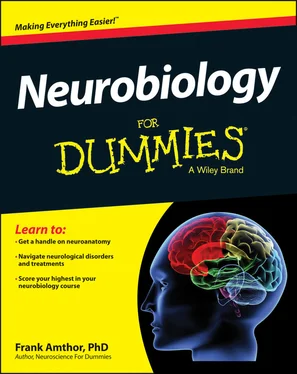252 250
253 251
254 252
255 253
256 254
257 255
258 256
259 257
260 258
261 259
262 260
263 261
264 262
265 263
266 264
267 265
268 266
269 267
270 268
271 269
272 270
273 271
274 272
275 273
276 274
277 275
278 276
279 277
280 278
281 279
282 280
283 281
284 282
285 283
286 284
287 285
288 286
289 287
290 288
291 289
292 290
293 291
294 292
295 293
296 294
297 295
298 296
299 297
300 298
301 299
302 300
303 301
304 302
305 303
306 304
307 305
308 306
309 307
310 308
311 309
312 310
313 311
314 312
315 313
316 314
317 315
318 316
319 317
320 318
321 319
322 320
323 321
324 322
325 323
326 324
327 325
328 326
329 327
330 328
331 329
332 330
333 331
334 332
335 333
336 334
337 335
338 336
339 337
340 338
341 339
342 340
343 341
344 342
345 343
346 344
347 345
348 346
349 347
350 348
351 349
352 350
353 351
354 352
355 353
356 354
357 355
358 356
359 357
360 358
361 359
362 360
363 361
364 362
365 363
366 364
367 365
368 366
369 367
370 368
371 369
372 370
373 371
374 372
375 373
376 374
377 375
378 376
379 377
380 378
381 379
382 380
383 381
384 382
385 383
386 384
387 385
388 386
389 387
390 388
391 389
392 390
393 391
394 392
395 393
Life existed for a long time on earth before human intelligence. Does our planet just happen to be the only one whose conditions make life possible? Or are we one of billions of planets that sustain life? If little green men in flying saucers showed up, we could ask them the answer. But failing that, and without any conclusive evidence, we don’t really know.
The data we do have that we can examine is that life originated at least once here on earth very shortly after conditions appeared to be suitable to support it. More than three billion years after that, we humans appeared as a result of an almost uncountable number of life cycles, mutations, and reproductions.
This book is about the essential essence of humans as an intelligent life form — the nervous system. We can and do ask many questions about the nervous system, but here are three of the big ones:
What does our nervous system have in common with that of other animals?
How is our nervous system different from that of other animals?
What differences between humans are associated with differences in their nervous systems?
Neurobiologists have some answers to all three of these questions. We know that neurons are specialized cells with some functions specific to neurons, and others similar to most other cells on earth. We also know that nervous systems have similar organizational themes and methods of communication across all animal species. On the other hand, the nervous systems of mammals and primates are vastly more complicated than those of invertebrates and even of cold-blooded vertebrates. Finally, we know that small genetic differences and life experiences can produce significant changes in the behavior of identical twins that otherwise have almost identical brains.
This book attempts to explain in ordinary language how neurons work, how neurons make nervous systems, and how nervous systems produce intelligence and complex behavior.
This book starts with basic concepts and builds off of them. It first discusses cells and their origin and functions, then deals with basic brain anatomy made from those cells, and finally describes specialized systems for sensation, movement, and cognition.
The way this book is organized allows you to find the information you need quickly, whether you want to look up information on a neural dysfunction of a friend or relative who has Alzheimer’s or Parkinson’s diseases or you want to find out what the brain’s thalamus actually does.
Besides being a resource for any non-scientist inquisitive about the brain and nervous system, this book may be a useful accompanying text for students in undergraduate neurobiology courses because it’s both modular and functional. For example, many books talk about brain anatomy using massively long lists of obscurely named brain nuclei and tracts, but they don’t try to help you understand all these components as a functional system. Perception and behavioral neuroscience courses often neglect important aspects of cognitive processing, while cognitive science texts often give you little information about how neural activity actually supports cognition. This book is different. This book uses plain language and some very simple diagrams to show how important parts of the brain and nervous system function.
Sidebars (text in gray boxes) and anything marked with a Technical Stuff icon are skippable. Also, within this book, you may notice some web addresses breaking across two lines of text. If you’re reading this book in print and you want to visit one of these web pages, simply key in the web address exactly as it’s noted in the text, pretending as though the line break doesn’t exist. If you’re reading this as an e-book, you’ve got it easy — just click the web address to be taken directly to the web page.
As I wrote this book, I made some assumptions about you, the reader:
You may be looking for information about a neurological disease or dysfunction, possibly affecting someone you know. You want access this information quickly in easy-to-understand chunks.
You may be taking a college or professional course that covers some aspect of brain function, but the course or the text for the course doesn’t provide enough background information.
You may be a beginning student in neuroscience, neurology, or neurosurgery who has already learned what’s in this book but you need to look up the basics quickly, maybe to explain it to a layperson. (Warning: If your patients notice you rifling through a copy of this book before recommending treatment options, they might request a second opinion.)
I use icons in this book to help you find specific kinds of information. They include the following:
 Anything marked with a Tip icon is a piece of information about an area of neurobiology that’s often misunderstood or easily confused.
Anything marked with a Tip icon is a piece of information about an area of neurobiology that’s often misunderstood or easily confused.
 The Remember icon highlights key concepts and principles that you need to remember to understand other areas of neurobiology.
The Remember icon highlights key concepts and principles that you need to remember to understand other areas of neurobiology.
 The Research icon is about key studies that led to our current understanding of neurobiology. Sometimes pieces of research are just beautiful in their own right for their elegance and simplicity. Research info bits are nice to drop in conversations at cocktail parties — if you party with people nerdy enough to know a fair amount of neurobiology, at least.
The Research icon is about key studies that led to our current understanding of neurobiology. Sometimes pieces of research are just beautiful in their own right for their elegance and simplicity. Research info bits are nice to drop in conversations at cocktail parties — if you party with people nerdy enough to know a fair amount of neurobiology, at least.
Читать дальше

 Anything marked with a Tip icon is a piece of information about an area of neurobiology that’s often misunderstood or easily confused.
Anything marked with a Tip icon is a piece of information about an area of neurobiology that’s often misunderstood or easily confused. The Remember icon highlights key concepts and principles that you need to remember to understand other areas of neurobiology.
The Remember icon highlights key concepts and principles that you need to remember to understand other areas of neurobiology. The Research icon is about key studies that led to our current understanding of neurobiology. Sometimes pieces of research are just beautiful in their own right for their elegance and simplicity. Research info bits are nice to drop in conversations at cocktail parties — if you party with people nerdy enough to know a fair amount of neurobiology, at least.
The Research icon is about key studies that led to our current understanding of neurobiology. Sometimes pieces of research are just beautiful in their own right for their elegance and simplicity. Research info bits are nice to drop in conversations at cocktail parties — if you party with people nerdy enough to know a fair amount of neurobiology, at least.










